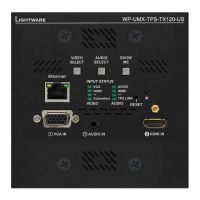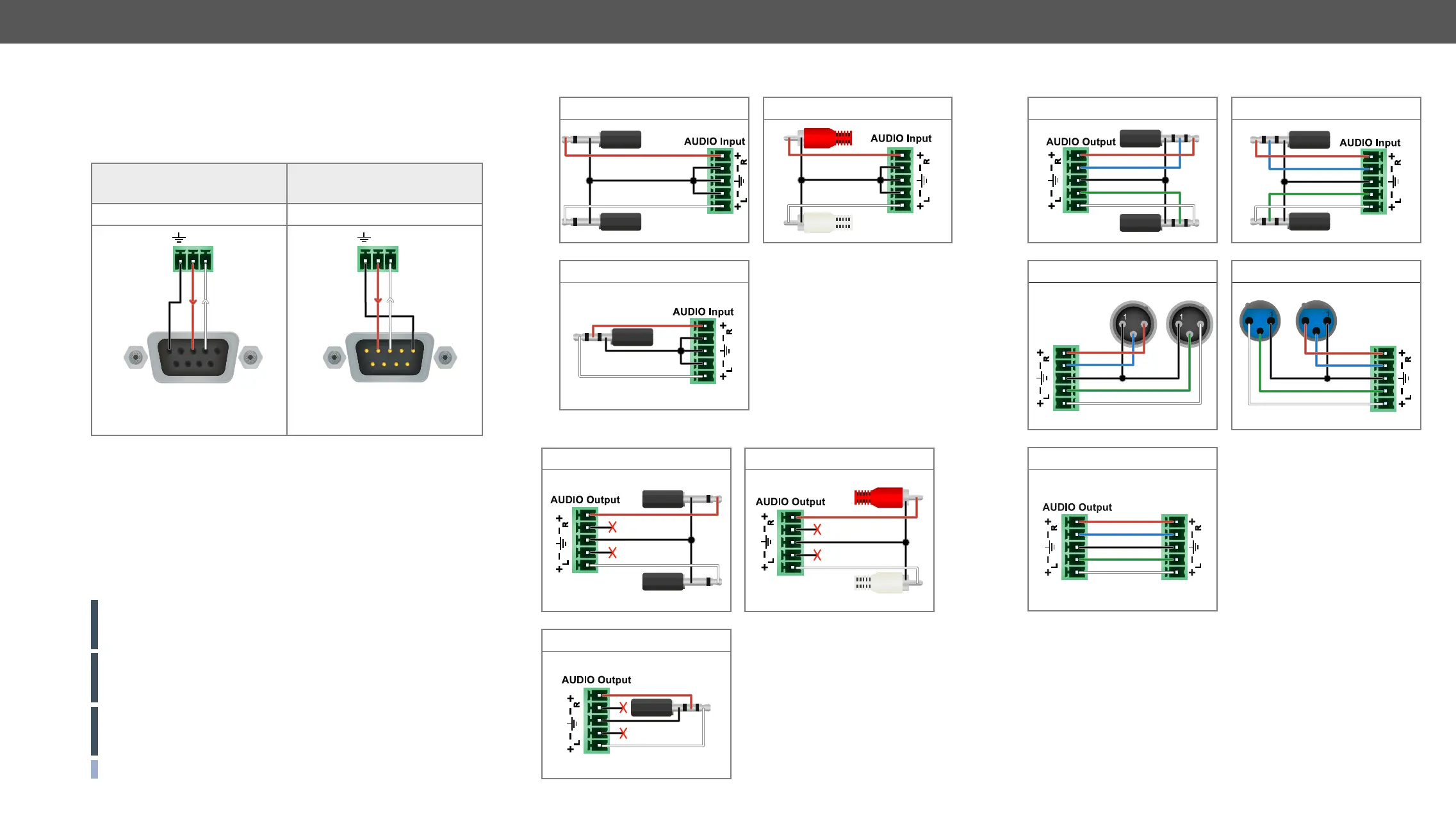11. Appendix UMX-TPS-TX100 series – User's Manual 116
Cable Wiring Guide
Cable Wiring Guide for Serial Data Transmission
The standalone transmitters are built with 3-pole Phoenix connector.
See below the two examples of the most common assembling cases.
D-SUB 9 and Phoenix D-SUB 9 and Phoenix
1
6
9
5
2: TX data
3: RX data
1
6
9
5
2: RX data
3: TX data
Audio Cable Wiring Guide
Inputs and outputs of audio devices are symmetric or asymmetric.
The main advantage of the symmetric lines is the better protection
against the noise therefore, they are widely used in the professional
audio industry. Symmetric audio is most often referred to as balanced
audio, as opposed to asymmetric, which is referred to as unbalanced
audio. Lightware products are usually built with 5-pole Phoenix
connectors so we would like to help users assembling their own audio
cables. See the most common cases below.
ATTENTION! Symmetric and asymmetric lines can be linked with
passive accessories (e.g. special cables), but in this case half of
the line level is lost.
ATTENTION! There are numerous types of regularly used connector
and cable types to connect audio devices. Please always make sure
ATTENTION! Never join the phase-inverted (negative, cold or -)
poles (either right and left) to the ground or to each other on the
output side, as this can damage the unit.
INFO: Use a galvanic isolation in case of a ground loop.
From Unbalanced Output to Balanced Input
2 x RCA - Phoenix
From Balanced Output to Unbalanced Input
Phoenix - 2 x RCA
From Balanced Output to Balanced Input
Phoenix - 2 x XLR 2 x XLR - Phoenix
2
3
2
3
2
3
2
3
Phoenix - Phoenix
For more information about the cable wiring see the Cable Wiring Guide
on our website
papers.

